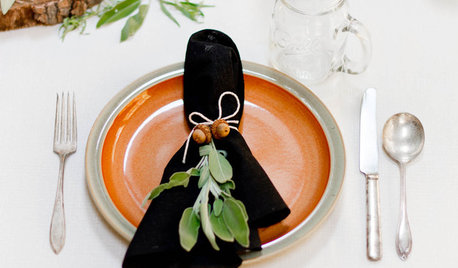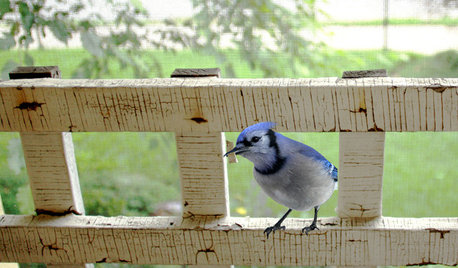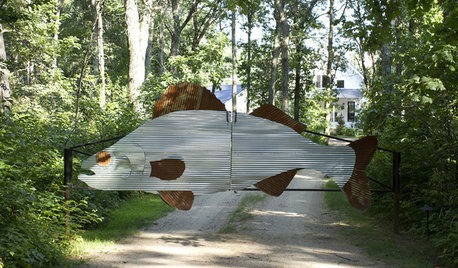Eating acorns
allenwrench
15 years ago
Related Stories


PRODUCT PICKSYour Thanksgiving: Make the Kids' Table Fun
The kids will thank you for a Thanksgiving table set especially for them
Full Story
GARDENING GUIDESOh, Deer! 10 Native Flowers That Stand Up to the Herds
Keeping a garden amid hungry deer can be hard, but these plants should fare well
Full Story
FALL GARDENING7 Reasons Not to Clean Up Your Fall Garden
Before you pluck and rake, consider wildlife, the health of your plants and your own right to relax
Full Story
FEEL-GOOD HOMESimple Pleasures: 10 Ideas for a Buy-Less Month
Save money without feeling pinched by taking advantage of free resources and your own ingenuity
Full Story
GARDENING FOR BIRDSBackyard Birds: Meet Some Clever and Curious Jays
Boisterous jays provide plenty of backyard bird-watching in winter. Here’s how to identify all the varieties and welcome them into your yard
Full Story
FUN HOUZZSurvey Says: We’re Scared of Being Home Alone — and Spiders
A new Houzz survey reveals that most of us get spooked in an empty house. Find out what’s causing the heebie-jeebies
Full Story
FUN HOUZZ11 Ways to Have More Fun at Home
Every house needs a touch of humor — a funny sign or an accessory that always makes you smile. Here’s where to begin
Full Story
HOLIDAYSSpend Less Without Being a Grinch: 8 Holiday Ideas
Give meaningful gifts and use nature's decor to work holiday magic without blowing your budget
Full Story









applenut_gw
rosefolly
Related Professionals
Surprise Landscape Architects & Landscape Designers · Folsom Landscape Architects & Landscape Designers · Sahuarita Landscape Architects & Landscape Designers · Pelham Landscape Contractors · Wakefield Landscape Contractors · Caldwell Landscape Contractors · El Sobrante Landscape Contractors · Ellicott City Landscape Contractors · Emmaus Landscape Contractors · Forest Hills Landscape Contractors · Mequon Landscape Contractors · Middle River Landscape Contractors · Plainview Landscape Contractors · Vashon Landscape Contractors · Maple Heights Landscape ContractorsKonrad___far_north
wild_forager
lucky_p
Konrad___far_north
theaceofspades
lucky_p
Konrad___far_north
rosefolly
allenwrenchOriginal Author
allenwrenchOriginal Author